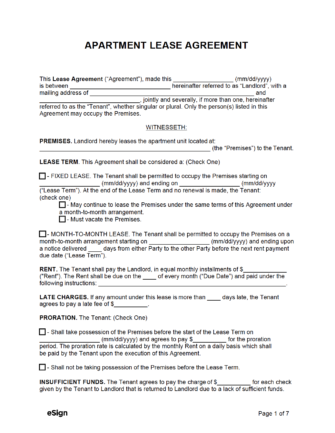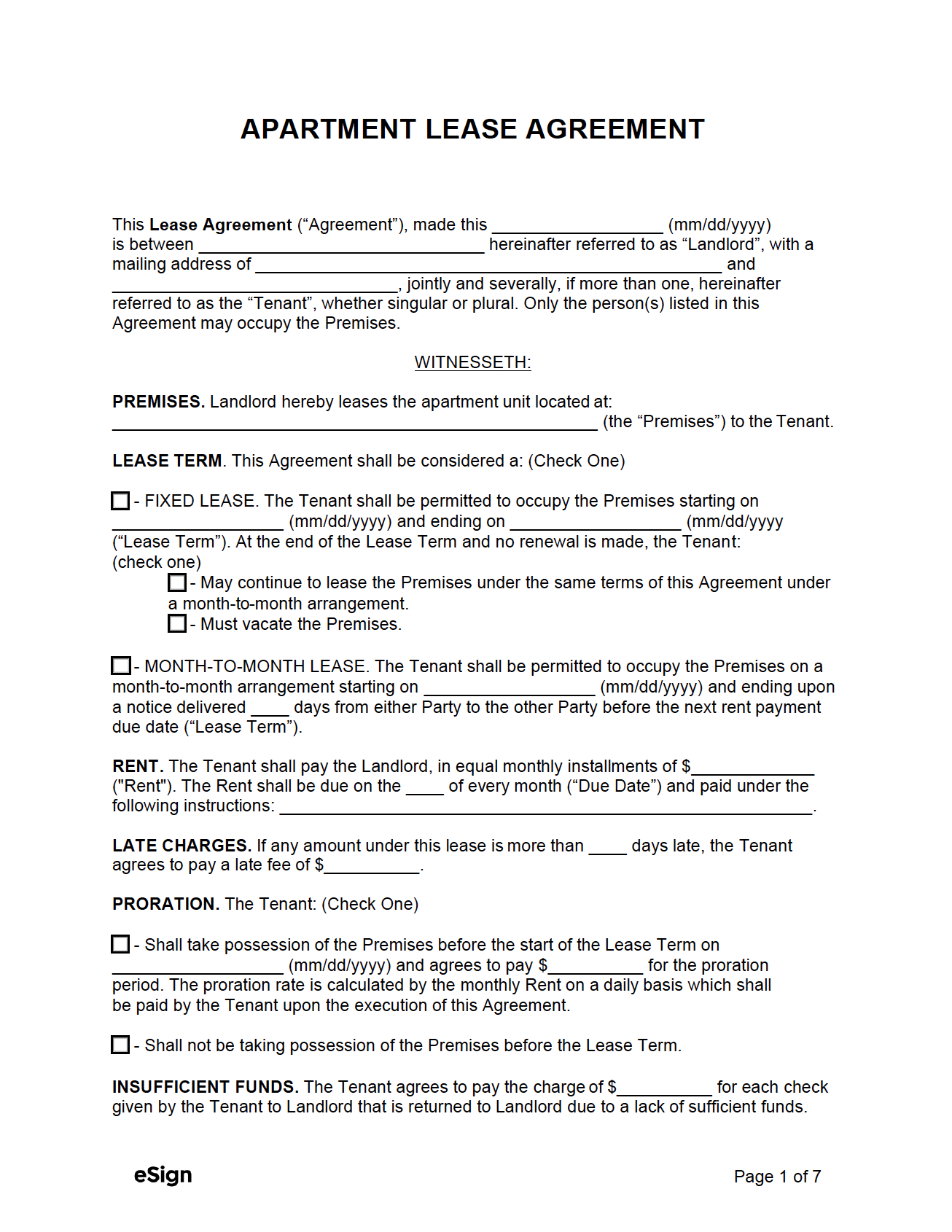How to Write an Apartment Lease
Step 1 – Identify the Parties
The lease must identify the landlord and tenant, and each party’s address.
Step 2 – Establish the Basics
A rental agreement must specify the rent amount and the term of the agreement. The landlord has two (2) options when it comes to the lease term:
- Fixed-term lease: The most common type of apartment lease. It specifies the start and end date, and cannot be terminated early without consequences. At the end of the lease, it can continue on a month-to-month basis or require the tenant to vacate.
- Month-to-month (periodic) lease: A less binding agreement that does not specify an end date and renews on a monthly basis. To end the contract, either party must notify the other in advance (typically 30 days).
The lease must also outline the following:
- The rent amount and due date.
- The late fee amount and the grace period before tenants are charged.
- The security deposit amount and within how many days it must be returned to the tenant after the lease ends.
Step 3 – Outline the Terms
The landlord will need to ensure the following terms are also included:
- The utilities or services that the tenant will be responsible for paying.
- The number of occupants.
- The number of days the tenant must be absent from the property before being required to notify their landlord.
- The smoking policy.
- Whether any parking spaces are included in the lease.
- The pet policy.
- The amount of notice the landlord is required to provide before entering the unit.
Step 4 – Add any Additional Rules
The landlord may have specific rules for the rental that they may include, such as pool guidelines, cannabis restrictions, or instructions on moving in. This section must comply with state and federal landlord-tenant laws.
Step 5 – Sign the Lease
Once all the fields have been completed, the parties must sign the apartment lease agreement. Signing can be done by hand or electronically via eSign.

